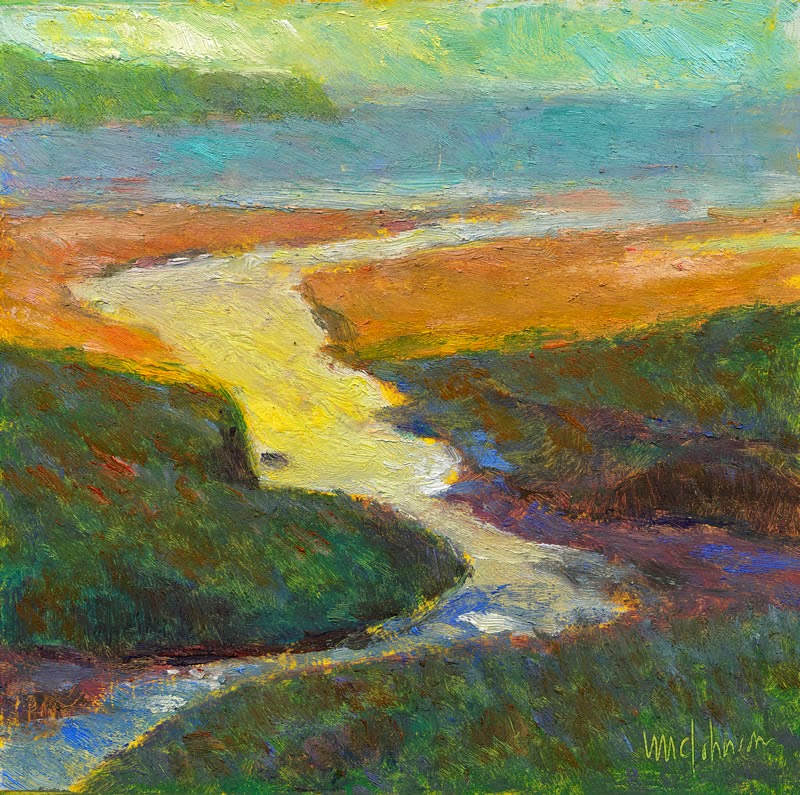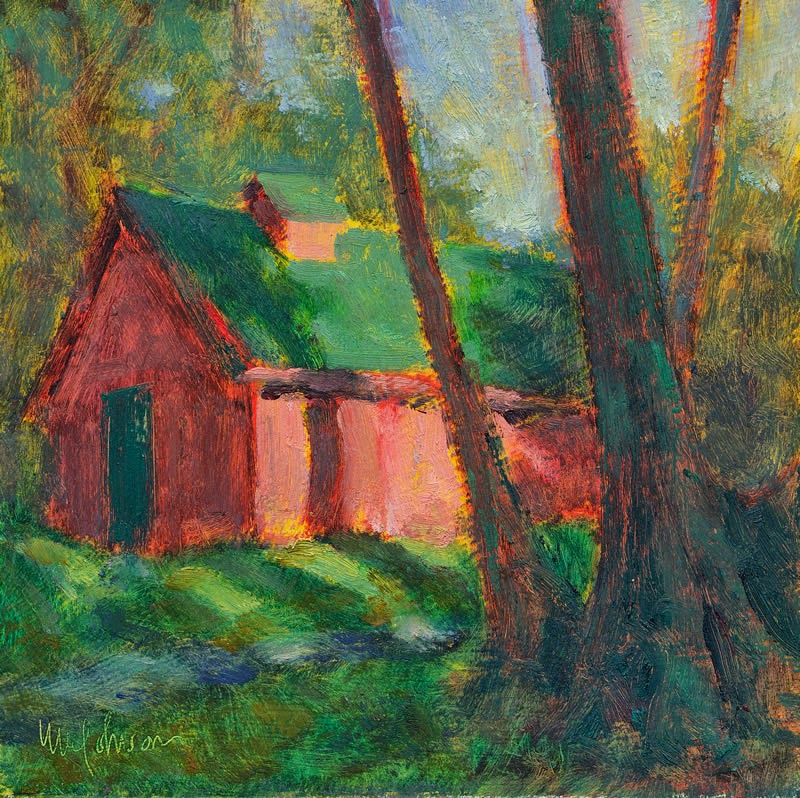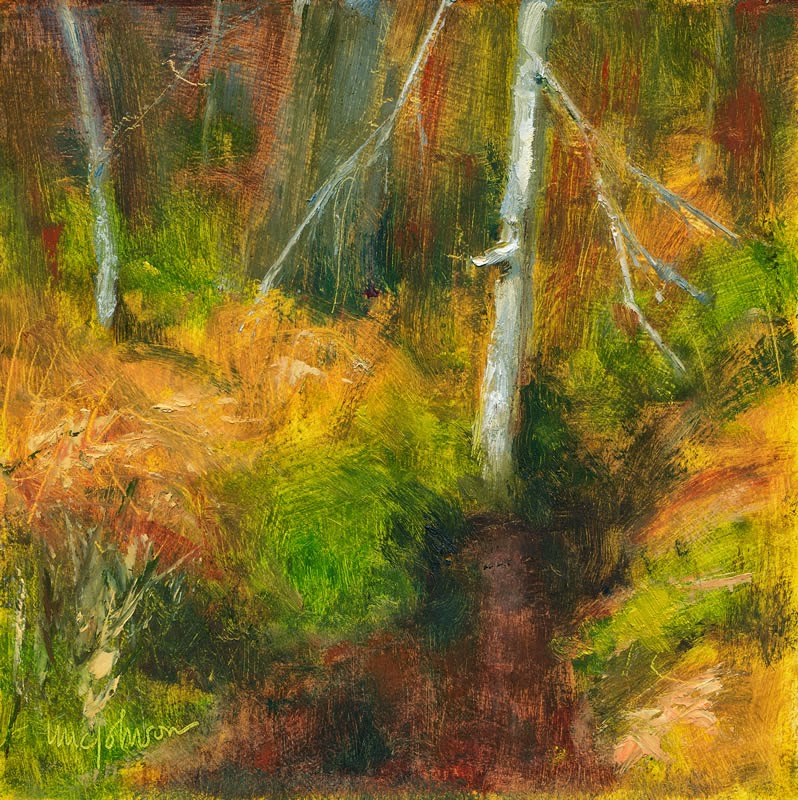 |
|
Friar’s Head in Winter, by Michael Chesley Johnson, oil on canvas
|
2014 marks the 50th anniversary of the founding of the Roosevelt-Campobello International Park. It is one of my own favorite summer destinations, and I first visited it not long after it was made a park.
 |
|
Duck Pond Marsh Sunset, by Michael Chesley Johnson, oil on canvas
|
“I’ve spent several years now painting the cottages and the landscape in the Park, and it has become a significant part of my life as a painter,” wrote Michael Chesley Johnson. To honor the park’s anniversary, Johnson has created a series of fifty paintings featuring scenes from the park. The paintings will be exhibited at the Park’s new restaurant, The Fireside, from July 19-August 16.
 |
|
The Ice House, by Michael Chesley Johnson, oil on canvas
|
As a child and young adult, Franklin D. Roosevelt summered on Campobello Island, where he sailed, swam, and otherwise generally confronted nature in a way we wouldn’t dream of allowing our children to do today. After his marriage, he brought his young family. It was here in August 1921 that he was stricken with poliomyelitis. He rarely returned after that, but Eleanor Roosevelt and their children continued to visit.
 |
|
Snug Cove, by Michael Chesley Johnson, oil on canvas
|
Although the Roosevelts were a prominent business, social and political dynasty at the beginning of the 20th century, their cottage at Campobello is simple by the standards of the day. It is large (34 rooms), but almost austere; it was a family vacation home, not a mansion.
The park surrounding it is truly an international park, managed jointly by the United States and Canada. Campobello Island is in the Bay of Fundy, which lies between New Brunswick and Nova Scotia and touches the state of Maine. Roosevelt’s cottage is the centerpiece of the park, but there are other structures and 3000 acres of beaches, cliffs, meadows and bogs.
 |
|
Glensevern Road Beach Swamp, by Michael Chesley Johnson, oil on canvas
|



